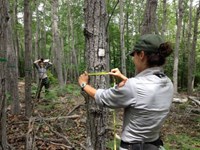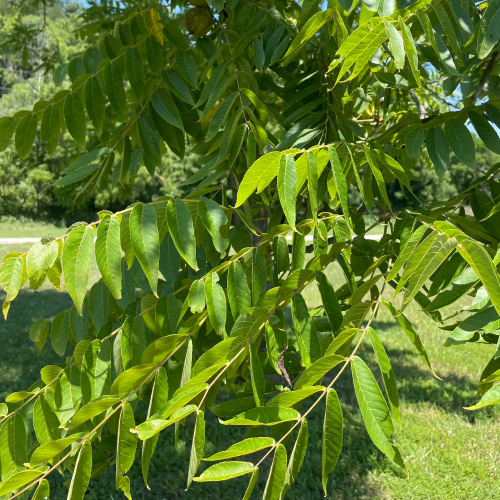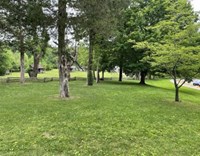- Lesson Plan (9)
- Distance Learning (1)
- Student Activities (1)
- Acadia National Park (4)
- Abraham Lincoln Birthplace National Historical Park (2)
- Carl Sandburg Home National Historic Site (1)
- Everglades National Park (1)
- Florissant Fossil Beds National Monument (1)
- Fossil Butte National Monument (1)
- Mammoth Cave National Park (1)
- New Orleans Jazz National Historical Park (1)
- Shenandoah National Park (1)
- Science (13)
- Literacy and Language Arts (3)
- Social Studies (2)
- Math (1)
- 11-12.RL.1 (1)
- 11-12.RL.10 (1)
- 8.RL.1 (1)
- 9-10.RL.1 (1)
- 9-10.RL.10 (1)
Showing 14 results for leaf ...
Leaf Rubbing Activity
Leaf ID - Part One
Leaf ID - Part Two
"Leaf Hunt" Plant Activities: 4-6 Grade
- Type: Lesson Plan
- Grade Levels: Upper Elementary: Third Grade through Fifth Grade

There is a huge diversity of leaf structures (adapted to getting sunlight, nutrients, and water in their specific habitat) in South Florida. Both tropical and temperate species are able to survive here because of their special adaptations. Students can become more familiar with the vegetation around them by simply taking time to study it up close. This activity is designed to give students a chance to notice and appreciate the importance of diversity in leaf/plant adaptations.
Leafy Thermometers and Rain Gauges
- Type: Student Activities
- Grade Levels: High School: Ninth Grade through Twelfth Grade

During this six-part activity, students investigate climate and climate change. Using fossil leaves from southwestern Wyoming and modern leaves from their area, students classify leaves, determine mean annual temperature and precipitation using leaf margin and leaf area analysis, analyze climate data (temperature and precipitation), and make statements about climate change.
Looking at Leaves
- Type: Lesson Plan
- Grade Levels: Lower Elementary: Pre-Kindergarten through Second Grade

In this first part of a study of leaves, students will learn to differentiate leaves from different plants, shrubs & trees by looking at attributes including leaf shape, edges and arrangement. Students will become familiar with these attributes as they first sort, then hunt for and draw a variety of leaves.
Biodiversity: Plant Identification
- Type: Lesson Plan
- Grade Levels: Lower Elementary: Pre-Kindergarten through Second Grade

In this second part of a study of leaves, students will use their knowledge of attributes including leaf shape, edges and arrangement to identify many of the different plants, shrubs and trees in a selected nearby area, such as an outdoor classroom. Use data to create a field guide to plants (including bushes & trees) in the local habitat.
LESSON 1 - SAN MALÓ AND INTRODUCTION TO UNIT
- Type: Lesson Plan
- Grade Levels: High School: Ninth Grade through Twelfth Grade
This lesson is an introduction to the book Le Ker Creole. Students will learn about the language of Kréyol, and about Creole culture and music, with a focus on the folk hero Juan San Maló. They will hear a song in Kréyol about San Maló and examine the lyrics to become familiar with the historic figure upon which the folk hero is based.
Shapes Of The Season
- Type: Lesson Plan
- Grade Levels: Lower Elementary: Pre-Kindergarten through Second Grade

This lesson plan is from "Making Connections: A Curriculum Guide to Mammoth Cave National Park, GrK-3", which comprises ten lessons. This is lesson 4 of that set. Students collect and classify leaves. This art project then re-creates their favorite leaf shape in the colors of fall - ready to hang in the window as a sun-catcher.
Nature Imprint
So You Wanna Be a Paleobotanist?
- Type: Lesson Plan
- Grade Levels: Upper Elementary: Third Grade through Fifth Grade

Students will re-create scientific studies done by paleobotanists analyzing data from fossil plants found at Florissant Fossil Beds to draw conclusions about the paleoclimate 34 million years ago. In this activity, students will identify fossil plant species by their leaves, review data on the growing conditions of their nearest modern plant relatives, and compare as many species as possible to determine the range of temperature and precipitation that the fossil plant community can live in.
Girl Scouts Cadette Eco Trekker at Carl Sandburg Home NHS
- Grade Levels: Middle School: Sixth Grade through Eighth Grade
9th-12th Grade | Virtual Exploring Earth Science: The Shenandoah Salamander and Climate Change
- Type: Distance Learning
- Grade Levels: High School: Ninth Grade through Twelfth Grade

The Shenandoah salamander is an endangered species found only on a few rocky slopes within Shenandoah National Park. Its survival is being threatened by changing climate and habitat competition. Students will virtually explore and research to determine how climate change and habitat competition could be impacting the survival of the Shenandoah salamander. Students will collaborate and present potential survival plans for the species. Two 60 minute sessions
- Type: Lesson Plan
- Grade Levels: Middle School: Sixth Grade through Eighth Grade

What adaptations do bees have to be effective pollinators and to survive? Students will •observe and dissect the external structural adaptations of honey bees •compare the form of the structural adaptations of honey bees to their functions •explain how the adaptations allow honey bees to be effective pollinators and survivors





